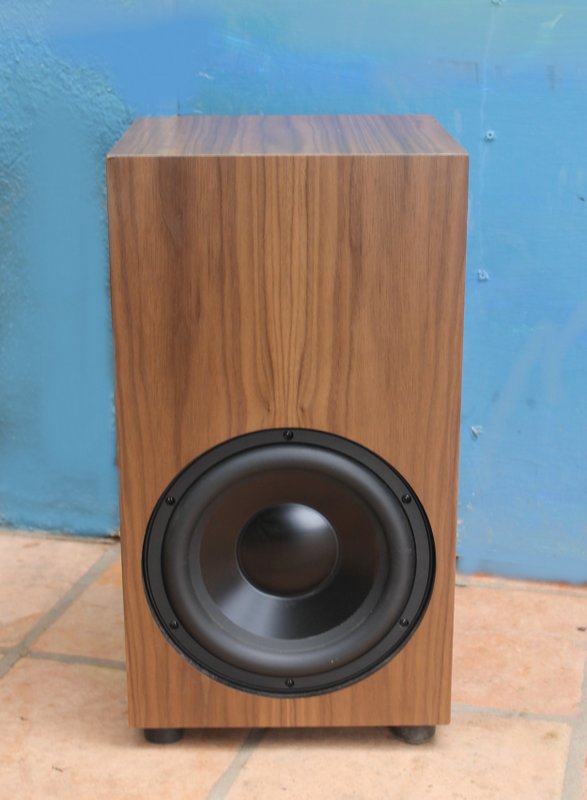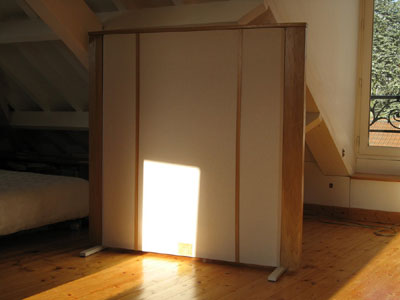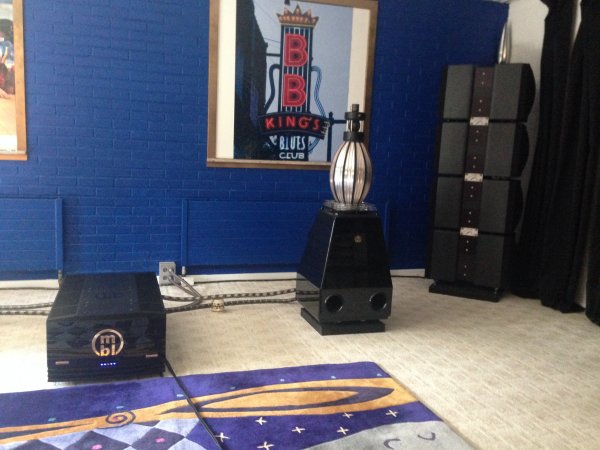Swarm appears to be mono. Can it be stereo?
Yes, absolutely! You'd need to add a second amplifier, and drive the subs on one side of the room with one amp, and on the other with the other.
Now my understanding is that very, very few recordings have stereo information below 80-100 Hz or so. But there is still an improvement to be had from adding that second amplifier. David Griesinger, inventor of the Lexicon processor, recommends locating subs to the left and right of the listening area and adjusting their relative phases so that they are 90 degrees apart (in "phase quadrature"). He reports that this significantly enhances the sense of spaciousness and envelopment, and I agree. Robert Greene also found this technique to work well when he had the Swarm for his review.
Also, your information seems to minimize the importance of group delay, yet another experienced individual affiliated with JL Audio insists that consideration of group delay is paramount. Would you address this further?
In one of the studies I read in the Journal of the Audio Engineering Society, the researchers digitally synthesized group delay independent of frequency response, and specifically looked at group delay times comparable to what one would find in a vented box loudspeaker system. My recollection is that group delay was detectable but not by much on test tones, and effectively undetectable on music program material.
It would take me a while to dig up my source (might have been the same study though I think it was something else), but I recall reading that the audibility threshold for group delay is approximately 1/F, where F = the frequency. The Swarm's group delay peaks at 17 Hz, at a calculated 38 milliseconds. The calculated detection threshold at that frequency is 1/17Hz = 58 milliseconds. So we're well under the detection threshold, and besides 17 Hz is hard to hear. At the normally accepted lower limit of human hearing, 20 Hz, the detection threshold is 50 milliseconds, and the Swarm has 31 milliseconds of group delay. Above 30 Hz, our group delay is comparable to that of a sealed box.
So while there probably are vented systems where group delay is an audible problem, apparently it's not with my particular design. Obviously I believe there are other issues that matter more, in particular, large and highly detectable room-interaction peaks and dips.
While many of the criticisms leveled at vented box systems are technically valid (group delay, degraded transient response, pitch shift towards the tuning frequency as nearby notes decay, possible introduction of various non-linearities, excessive excursion below the tuning frequency), the critics often look at worse-case scenarios. The effects of these issues can often be brought below the level of audibility by careful design, and in practice they often do not start out as significant as our intuition would lead us to believe.
You see, the steady-state condition dominates perception at bass frequencies, because the ear's time-domain resolution is so poor. We cannot even detect the presence of bass energy from less than one wavelength, and we must hear several cycles before we begin to detect pitch. The steady-state frequency response tells us pretty much everything we need to know about the bass region (for example steady-state peaks correlate with slow decay, and the remedy is to smooth them out, which corrects their decay time as well).
Put another way, from a perceptual standpoint, there is no such thing as "first arrival sound" in the low bass region, at least not in the size rooms we have in our homes. By the time we hear low bass energy, it has reflected off of room boundaries many times. So while the difference in transient response between sealed and vented enclosures is certainly there, in and of itself, I really am not sure that it's perceptually significant. But I am quite confident that the in-room frequency response is perceptually significant.
That being said, I might be dead wrong about the audibility of group delay! Group delay (or other vented box problems) might matter far more than I've conceded here. Just so happens, that's covered too: You can plug the ports in the Swarm modules, converting them into Qtc = .5 sealed boxes which will have excellent transient response. The plugs I use were designed for plumbing, so they have no problem with the pressure differentials of a sealed subwoofer. Plugging the ports may result in insufficient low-bass authority, so to offset that, you can engage the bass boost switch on the back of the amp, which boosts the 25 Hz region by 6 dB. If this proves to be too much bass boost, reverse the polarity of one of the subs. If it's still too much, unplug the port of the reversed sub. And so on.
You have probably gathered by now that the Swarm has a lot of degrees of freedom as far as tweaking for best performance. In my open-floor-plan living room, I tried a number of different configurations and all ports open with one sub in reverse polarity seemed to work the best. There is no reason why you can't mix and match sealed and ported Swarm modules, in and out of normal polarity, with or without bass boost or parametric EQ, and just go with what works best for you.
In sealed-box mode, I think the combined output of my four subs would be comparable to that of some ballpark-dollar-equivalent compact sealed "ubersubs"... my combined four cubic feet of internal volume plus four cones and four motors helps make up for not having a 2" excursion megawattage uberwoofer. Where the Seatons beat me in output is, having two 15" uberwoofers in 4+ cubic feet driven by 4 kilowatts, if I understand correctly. They really are a terrific value, and I've heard Mark's full-range speakers, and in my opinion he's a superb designer.
The reasons I use a vented box as the default configuration for the Swarm are: 1) we can achieve my "room gain compensation" target response without EQ; and 2) we get 6 dB more output at 20 Hz than in sealed box mode essentially "for free", assuming I did my job as far as keeping the problems inherent in vented boxes below their audibility thresholds.
* * * *
Someone sent me a message, probably earlier today, but somehow I lost it right after I clicked on it and before I could read it, and now I can't find it. Whoever that was, could you re-send? Thanks!

















